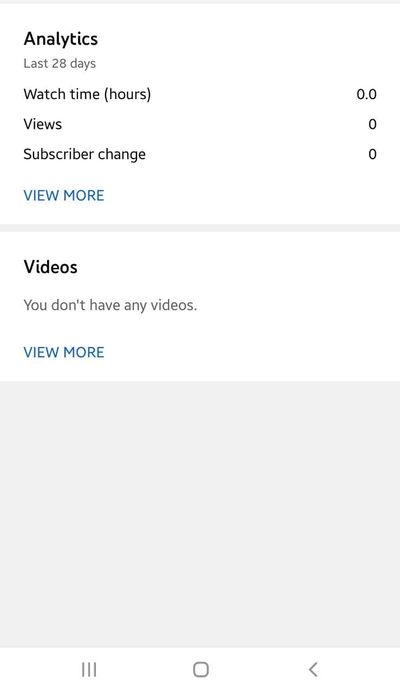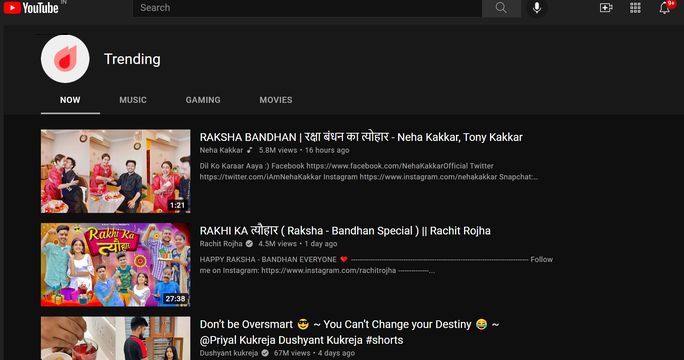YouTube is no less than a holy grail for content creators.
While good content stays on top of the list, tracking performance falls right behind it when understanding the success of your YouTube career.
Bifurcating further, the idea of performance is best understood when you know how easy it is to discover you on YouTube. If you are readily discovered, it means that a YouTube search recognizes you.
And what will make YouTube search recognize you? Your content and its viewership.
Here, we would like to introduce the idea of optimizing the content for better search.
Did you know that search and discovery are well-recognized facets of YouTube analytics?
Simply put, YouTube search analytics include a two-fold system of helping the viewers discover you by finding your videos and maximizing the viewer engagement.
It is a well-formulated system in which your content surfaces and your video has a due chance for success.
How to Look up Search Analytics on YouTube?
To get access to search and discovery on YouTube and understand how it affects your viewership, you must locate search analytics.
Let us now quickly look at this guide to look up search analytics:
On Your Desktop
To see search analytics on your desktop:
- Head over to YouTube Studio and sign in to your account using your login credentials.
- On the left side, you would notice a menu. From this menu, select “Analytics”.
- From the analytics section, you can take a look at the data specific to search analytics.
You can also access data for the video level by:
- Signing in to YouTube Studio
- From the left menu, select “Content”
- Click on the video you wish to see the search analytics of.
On Your Phone
To see search analytics on your phone:
-
From the Google Play Store, search for the YouTube Studio application and download it.
-
Sign in to your account and head over to the summary metrics dashboard. From here, click on the button “View More”.
-
Now you can see the further details. Here, more sections will emerge. Go to the “Reach”, “Audience,” and “Engagement” sections to gather more details for search analytics.
Once you can access the search analytics on YouTube, you can look for patterns. If you can make sense out of those, you would notice that YouTube matches each viewer with the things they enjoy.
According to SOAX research, even though every minute, about 500 hours of video are uploaded on YouTube, the algorithm still works so that it only shows recommendations based on your interests.
In the search analytics, you would also find that YouTube does not exhibit any favouritism over videos or formats. They understand the audience based on what they watch, their likes and dislikes, watch time, and the “not interested” feedback.
If you want to go deeper into interpreting these insights and learn how to turn them into actionable strategies, check out this complete guide on how to use YouTube Analytics.
5 Useful Tips to Optimize YouTube Search Analytics
The frequency with which your video pops up in search results or suggestions defines how many views and subscribers you have. It also determines the potential views and potential subscribers.
If you are someone who wishes to succeed on YouTube, decent discoverability holds much water. Therefore, ensuring an easy discovery of your videos requires you to optimize your search.
For this, you should note what your audience prefers and how you can match your content to their preferences.
Let us look at these tips and tricks below to optimize the search analytics of your videos:
1. Understanding Keyword Usage
Similar to Google, YouTube also works with keywords to show the most relevant search results. The ranking of the videos relies on numerous factors, and keyword usage is certainly one of them.
One of the best practices associated with keyword usage is to check out the words people use to arrive at your video. You can do this via the “Traffic Sources” section in “YouTube Analytics”.
Once you understand the terms and words that people prefer, you can use them on a repetitive basis in most of your videos. This will cement your audience finding you.
But make sure you do not overuse the keywords. Using too many keywords will compromise your content’s coherence, which might reflect negatively, as viewer retention could become low.
While using keywords in the title and description of your video can be a great thing, make sure you do not use them without context.
For instance, you have planned to make a video that does not feature the things you typically do, and your generally used keywords revolve around what you typically do, then do not use those sets of keywords just for the sake of it. Just imagine how odd that would be.
2. Special Focus on Description
The description of your channel and your video tells the YouTube users about your content. It also tells YouTube about what you want to show the world.
This is exactly why your video description should be contextually correct. Not only that, it should also make good use of keywords. We recommend placing major keywords in the first 150 characters of your description.
Why?
Because this is the part that readers see first. If they think you do not mean business by reading this, they would likely scroll over to the next video.
If relevant, writing bigger descriptions can also pose in your favor. Again, the logic here is to optimize the search results. A bigger description will be voluminous in keywords and hence, better possibility of a higher rank.
3. Good use of YouTube Translation Tools
YouTube offers translation tools to accommodate the interests of their global audience. With availability spanning more than 130 countries, YouTube is an international platform.
While the primary language remains English, users can opt to use YouTube in the language they feel comfortable in.
There are many countries where individuals do not know English, so you can translate the title and the description to ensure that your videos also land in their search results.
This will enable your fans to access both of these in the language of their choice. As your audience becomes global, your overall ranking would become better.
The best part is that translation on YouTube is super easy. You can do so using the subtitle section on YouTube Studio. You can easily add the language to your title and description from here.
4. New Video Ideas
Your video content should always be fresh to be the darling of the search engine and your audience.
For many YouTubers, this is a source of annoyance. They find it exceedingly hard to stay unique and keep bringing new content.
But you can always brainstorm some new video ideas by taking a quick look at search results for the most famous queries. Here you should look for the query results that harbor less competitive domains.
By doing so, you may come across a set of audiences that is not being served rightly. You can then focus on delivering them valuable content that they like.
5. Keep Checking What’s Trending
Keeping a lookout for what’s trending in your country and around the globe will help you nitpick the content that the masses prefer.
Once you find out about them, you can simply repurpose your content to accommodate the ideas propagated in trending ones.
Do not just pick up anything that is trending and recreate it. Stick to your niche.
What are Some Other Traffic Sources on YouTube?
YouTube search results comprise only a portion of the traffic that comes to your channel and your videos. There are many other traffic sources for your YouTube video.
Either from within YouTube or from an external source, there are numerous other places from where one can arrive at your video.
Let’s dive right into knowing what these are:
External Website
If a website or an application has your YouTube video embedded in it or a link to your video, you can generate traffic.
You can check the external website sources through the Reach tab. In this tab, you would find a card for “Traffic source: External”
Additionally, some traffic may come in from direct URL entry, bookmarks, and unidentified apps.
Video Suggestions
Whenever you watch a YouTube video, a tab for video suggestions pops in the right corner of the screen. Some video suggestions also come right after the other videos or from links embedded in the videos.
To check specific video suggestions, head to the Reach tab and go to the suggested video traffic source card.
Google Search
When someone searches a keyword on Google and then heads over to the “Video” section from the bar below the search box, they land on all the relevant videos to the keyword.
As it turns out, most of the better-ranking videos are generally from YouTube unless specified otherwise. Some traffic may come into your video or channel through direct Google searches.
Homepage Feeds
As you open your YouTube application or website, the first place you land on is the Homepage. Here, you could see the videos and playlists suggested to you based on your previous watches and choices.
Some of the videos will just prompt a re-watch, whereas others will be fresh. New videos from the channels you subscribe to also pop up in the Homepage feeds. Any video might gain direct traffic from this.
Unknown Sources
Other sources such as notification-driven traffic, traffic from video cards, advertising, product pages, creator end screens, campaign cards, etc., may count towards unknown traffic sources.
To fully understand how these traffic sources impact your channel performance, you can also run a complete YouTube audit to evaluate top metrics and uncover deeper insights.
Wrapping Up
While the word YouTube means entertainment to many, it is much more for those who make a living out of it. While search results and ranking on them are integral to your journey as a YouTuber, it is not the end goal.
The end goal is to drive traffic and through that subscribers, views, and likes. You can make $18 per 1000 views on a video; that is why views are the most prior thing on YouTube.
With that, we wish your videos good search rankings!






